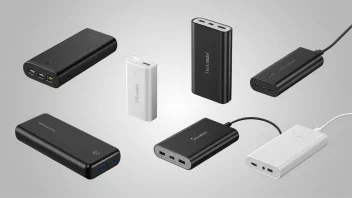In the world of sports and fitness, technology continues to play a pivotal role in optimizing performance and training efficiency. Among the most impactful innovations are wearable devices, which have transformed how athletes train and track their progress.
Wearables such as fitness trackers, smartwatches, and heart rate monitors provide real-time data that can be crucial for improving athletic performance. These devices allow users to monitor various metrics, including heart rate, steps taken, calories burned, and even sleep quality. With such information at their fingertips, athletes can tailor their training regimens to maximize effectiveness and recovery.
One of the key benefits of wearables is their ability to provide personalized feedback. For instance, heart rate monitors help athletes train in their optimal heart rate zones, ensuring they are pushing themselves enough to enhance endurance without overtraining. By using this data, athletes can determine when to increase intensity or scale back to prevent injury.
Moreover, many wearables come equipped with GPS technology that tracks distance and pace during runs or cycling sessions. This feature is particularly beneficial for endurance athletes who need to monitor their performance over long distances. With data on their speed and route, athletes can analyze their performance trends and make adjustments for future workouts.
Wearables also foster a sense of accountability and motivation. Many devices offer goal-setting features, allowing users to set and track specific fitness goals. This can be as simple as completing a certain number of steps daily or hitting a new personal best in a sprint. The ability to see progress in real-time encourages athletes to stay committed to their routines.
Another advantage of wearables is their compatibility with smartphone apps that provide deeper insights into performance and health metrics. These apps often offer features like workout plans, nutrition tracking, and community challenges, further enhancing the training experience. By integrating social connectivity, athletes can share their achievements and compete with friends or peers, adding a fun and motivating element to their training.
As technology advances, the capabilities of wearables are expanding. Newer models now include features like blood oxygen monitoring and stress tracking, providing a more comprehensive view of an athlete's health. This holistic approach can help athletes recognize when their body needs rest or when they’re at risk of burnout, allowing for better management of their training cycles.
In conclusion, the integration of wearables into athletic training represents a significant leap forward in how athletes approach their fitness journeys. By providing actionable insights, fostering accountability, and enhancing performance tracking, wearables are essential tools for anyone looking to improve their athletic endeavors. As these technologies continue to evolve, they promise to further revolutionize the landscape of sports and fitness.






